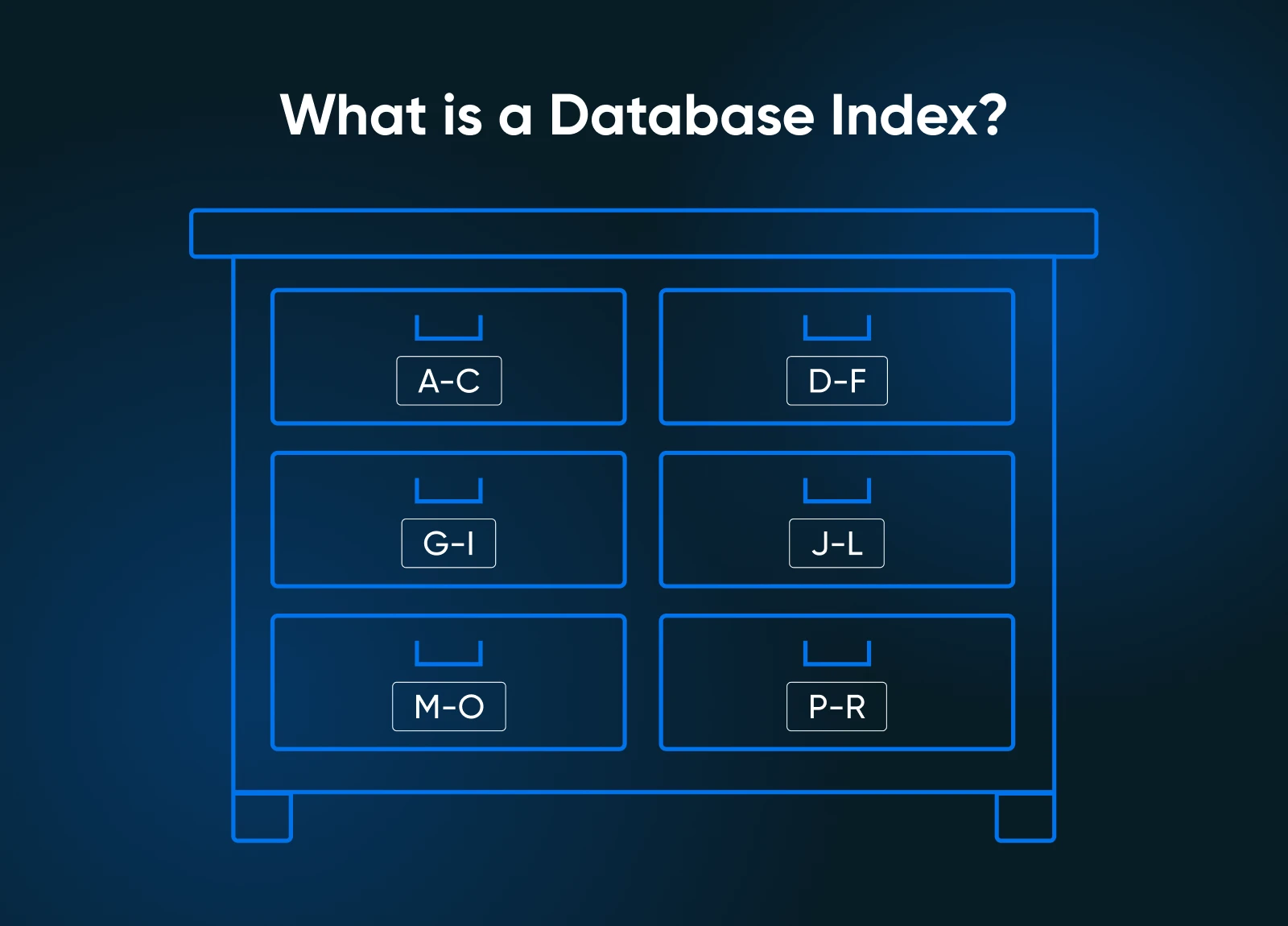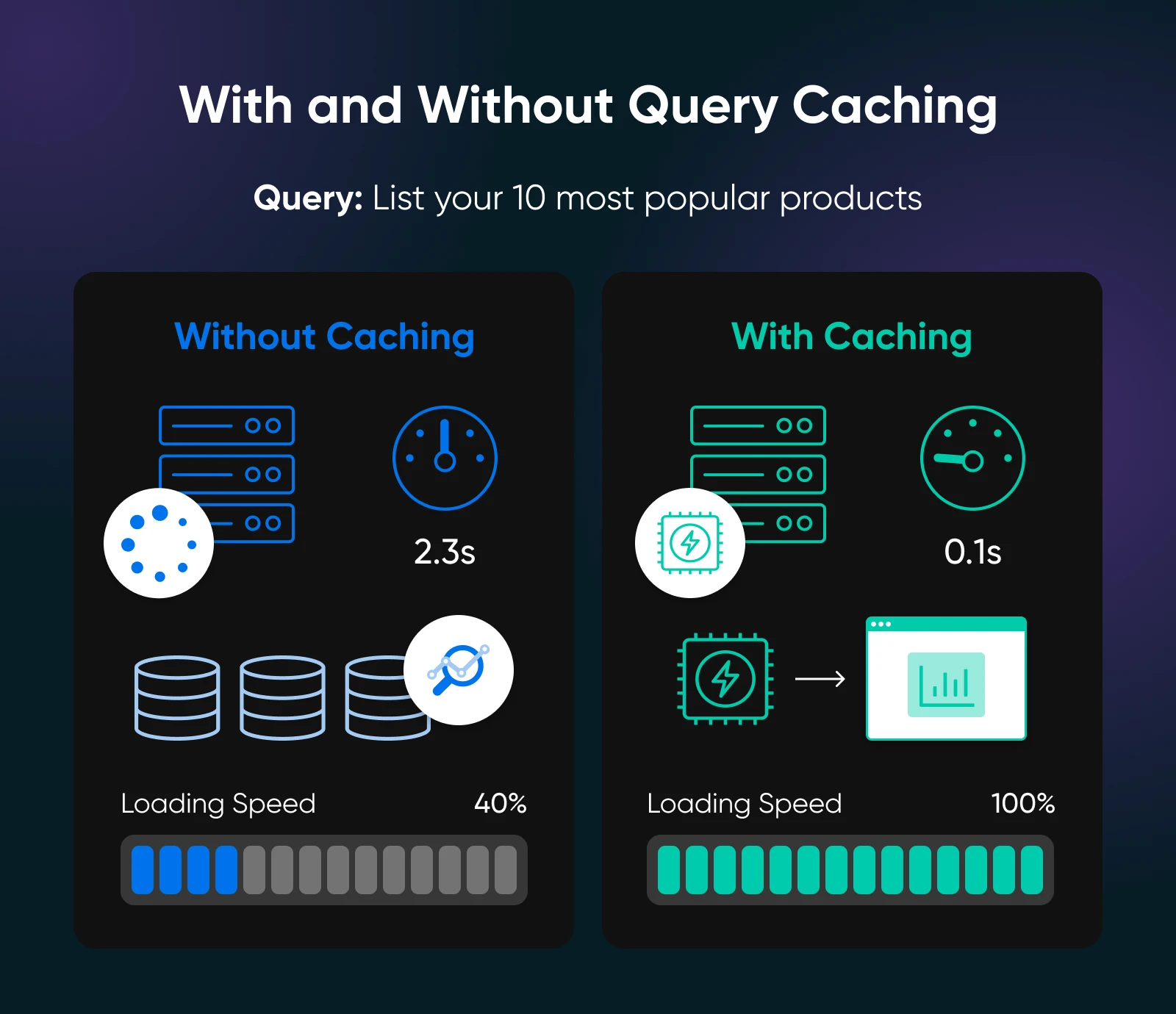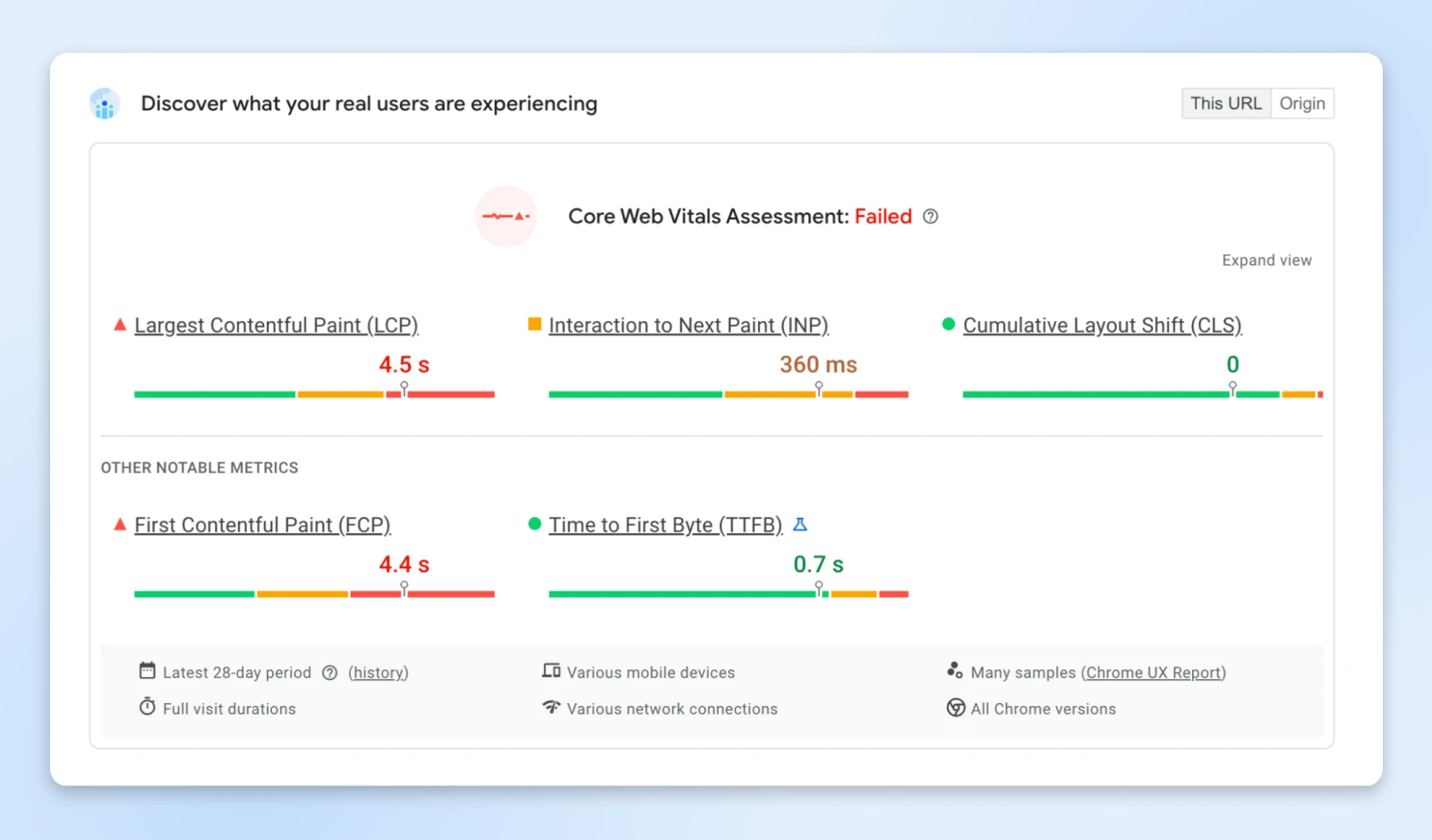Search “enhance VPS database efficiency” and also you’ll discover internet hosting corporations pitching VPS upgrades via weblog posts. We might too — we’ve a extremely scalable VPS product.
However upgrades alone gained’t resolve your downside.
You’d simply have a sluggish database on a costlier server. The fact is, most web sites don’t want upgrades, particularly not because the first step to bettering efficiency.
You wish to optimize the web site and database earlier than contemplating an improve.
That’s our intention with this information — that will help you optimize database efficiency in your present VPS.
What Do We Imply By “Optimizing Database Efficiency”?
Optimizing database efficiency means systematically bettering how rapidly and effectively a database processes queries, handles concurrent customers, and manages sources. This entails methods like indexing, question optimization, and {hardware} tuning to scale back response instances, improve throughput, and decrease operational prices whereas sustaining knowledge accuracy and system reliability.
Right here’s how that performs out:
Consider your database as a storage room. Over time, issues pile up till there’s no area to maneuver round and discovering what you want takes perpetually.
To assist with that, you would:
- Purchase a much bigger cupboard space.
- Take away pointless objects.
The higher possibility: take away pointless objects first. Shifting muddle to a much bigger area doesn’t resolve the basis downside. You could possibly find yourself with the identical downside a pair months down the road, now along with your larger cupboard space.
Your database works the identical manner. It collects knowledge (even hoarding stuff you now not want) so, you want common cleanups.
Is It Actually Your Database or Web site Code That’s Bloated?
You’ll want to verify what’s truly slowing down your website.
When database is the bottleneck:
- Pages with dynamic content material (like product listings or weblog archives) load slowly.
- Your website admin space feels sluggish when managing posts or merchandise.
- Database queries take longer than 1-2 seconds to finish.
- Peak site visitors instances trigger vital slowdowns.
When web site code is the issue:
- Your website takes perpetually to load even when database exercise is minimal. (Even static pages load slowly!)
- Massive picture recordsdata or unoptimized media lavatory down loading instances (verify GTmetrix first).
- Too many plugins or heavy themes trigger delays.
Fast diagnostic instruments:
- Use instruments like Question Monitor (for WordPress) to see which database queries are taking the longest.
- Verify your server’s CPU and reminiscence utilization throughout peak instances.
- Run a PageSpeed take a look at on each database-heavy pages and static pages to check load instances.
If database queries persistently exceed a couple of seconds, or database-heavy pages load considerably slower than static ones, you’ve got a database efficiency concern price addressing.
Nerd Observe: We needs to be clear – These suggestions should not DreamHost-specific. We point out this as a result of when you’ve got one among DreamHost’s managed internet hosting environments, the DreamHost crew will maintain the server-level upkeep for you.
How Can You Optimize Database Efficiency on a VPS?
Right here’s your step-by-step roadmap to make your database run prefer it’s on performance-enhancing dietary supplements:
1. Replace Your VPS Software program
It sounds primary, however many web site house owners by no means replace their VPS working system or server software program after the web site is dwell.
Why it issues: Outdated database software program is the simplest approach to miss out on efficiency enhancements and safety patches that builders have revealed.
For example, a database efficiency take a look at confirmed that newer variations of MariaDB are 13%-36% sooner than MySQL variations from the identical time. So, should you’re nonetheless utilizing an older database model, updating to the newest model ought to lead to a big efficiency increase.
What to replace particularly:
- Database software program: MySQL or MariaDB
- PHP model: PHP 8.4 (newest secure model launched November 2024) or PHP 8.3 for max compatibility
- Working system: Preserve your Linux distribution up to date with the newest safety patches
- Net server: Apache or NGINX
Nerd be aware: Keep in mind to check updates in a staging atmosphere first! You don’t need your dwell website to interrupt due to a compatibility concern.
2. Clear Up Database Bloat
Do not forget that storage room analogy? It’s time to Marie Kondo your database now.
Right here’s some frequent database muddle you’ll frequently want to scrub up:
- Previous put up revisions (WordPress can save 50+ revisions per put up)
- Spam feedback and unused remark meta
- Expired transients and cache knowledge
- Unused plugins’ leftover tables
- Log recordsdata that haven’t been cleared in months
For WordPress customers:
- Use plugins, like WP-Optimize or Superior Database Cleaner.
- Restrict put up revisions by including outline (‘WP_POST_REVISIONS’, 3); to your wp-config.php.
- Filter spam feedback frequently.
- Improve your PHP model to PHP 8.4, which incorporates efficiency enhancements, together with 2x-5x sooner SHA-256 operations and optimized dash capabilities.
For different platforms:
- Run OPTIMIZE TABLE instructions on incessantly up to date tables.
- Delete pointless log entries older than 30 days.
- Take away take a look at or dummy knowledge you created throughout growth.
3. Database Indexing

Consider database indexes as a desk of contents for a ebook.
With out them, your database should scan each single row to seek out what it wants. With indexes, the database can shortcut its approach to the place the info you requested for is. Correct indexing can cut back question instances from seconds to milliseconds and assist enhance your database efficiency by loads, particularly with bigger databases.
For WordPress, use a plugin like Index WP MySQL For Velocity, run via the steps within the plugin, and that’s it.
Nonetheless, you completely have to create an internet site backup earlier than indexing the database.
When so as to add indexes:
- You’ve massive tables with hundreds of rows for merchandise, weblog posts, customers, and so on
- Columns you incessantly search or filter by
- International key columns
- Many columns utilized in “JOIN” operations or “WHERE” clauses
When NOT so as to add indexes:
- Small tables (below 1,000 rows often don’t see any efficiency positive aspects)
- Columns that change incessantly (indexes decelerate “INSERT/UPDATE” operations)
- You’re brief on area and wish to be resourceful (indexes take up area)
4. Set Up Question Caching
Your database is sort of a useful librarian who will get requested for a similar set of (common) books usually. As a substitute of strolling to the again room, looking for the books time and again, a sensible librarian remembers the place the books are, perhaps even conserving the books in her desk drawers.
Question caching is just like this. When your database runs a question, it shops the lead to reminiscence. The following time somebody requests the identical knowledge, as an alternative of working the advanced question once more, your database serves up the cached outcome virtually immediately.
If the info will get up to date, the cached outcome will get up to date, and new customers are served the newest outcomes robotically.

Right here’s how one can implement question caching for MySQL 8.0 customers (commonest):
- ProxySQL: The really useful substitute for MySQL’s question cache. It sits between your software and database, caching outcomes with configurable TTL
- Software-level caching: WordPress customers ought to use caching plugins like W3 Complete Cache or the likes as an alternative of database-level caching for faster implementation.
- Redis or Memcached: Exterior caching techniques that require code modifications however provide extra management and higher scalability. Some internet hosting merchandise provide built-in object caching with Redis for e-commerce websites, membership websites, and information or weblog websites.
For many small web sites, you may safely skip database-level question caching totally. As a substitute, use your CMS or software’s built-in caching options first. For those who want extra efficiency, attain out to a dev for implementing a Redis occasion for object caching.
Vital replace: MySQL’s built-in question cache was deprecated in MySQL 5.7.20 and fully eliminated in MySQL 8.0. Whereas MariaDB nonetheless helps question cache, it’s disabled by default attributable to scalability points on multi-core machines.
5. Tune Your Database Configuration
Your database comes with default settings designed to work on any server, from a tiny shared host to enterprise {hardware}. However identical to a one-size-fits-all t-shirt, these settings should not optimized in your wants. They simply get the work finished.
VPS environments provide the energy to customise these settings in your particular setup.
Listed below are essentially the most impactful modifications for MySQL and MariaDB databases:
innodb_buffer_pool_size: Set to 70-80% of your out there RAM. For a 4GB VPS, use round 3GB.innodb_redo_log_capacity: For MySQL 8.0.30+, begin with 1-2GB (replaces the previous innodb_log_file_size setting).max_connections: Set to 4x your CPU cores, minimal 100. Most small websites want solely 20-50.query_cache_size: 128M-256M for MySQL 5.7/MariaDB (MySQL 8.0 eliminated question cache totally).
Use MySQL Tuner or PGTune to get customized suggestions based mostly in your precise utilization patterns. These instruments analyze your present setup and counsel optimum values.
Professional tip: MySQL 8.0.30+ allows you to resize redo logs with out restarting:
SET GLOBAL innodb_redo_log_capacity = 2147483648At all times again up your database earlier than making configuration modifications! Take a look at on a staging atmosphere, after which throughout low-traffic durations.
6. Select the Proper Storage Engine
Consider storage engines as totally different submitting techniques in your knowledge. You’ll want to manage knowledge otherwise to work with the storage engine you utilize.
Most trendy functions use InnoDB (MySQL’s default), however there are particular circumstances the place different engines make sense on a VPS.
- InnoDB (really useful for many websites): Excellent for e-commerce websites, blogs, and functions with frequent updates. It helps transactions, overseas keys, and crash restoration. The trade-off is barely greater reminiscence utilization, however on a VPS with devoted sources, this isn’t often an issue.
- MyISAM (use sparingly): Quicker for read-heavy operations and makes use of much less reminiscence, however lacks crash restoration and transaction help. Solely contemplate this for tables that hardly ever change, like lookup tables or archives.
- Reminiscence (particular circumstances solely): Shops knowledge in RAM for lightning-fast entry however loses every thing when the server restarts. It’s good for short-term knowledge or session storage on a VPS the place you management the atmosphere.
To verify what storage engines your tables are utilizing, run:
SHOW TABLE STATUS;In your MySQL console, you may convert tables with:
ALTER TABLE your_table ENGINE = InnoDB;The VPS benefit: In contrast to shared internet hosting, you’ve got full management over storage engine selections and may select to run a number of engines concurrently with out restrictions. After all, which means you must watch out with what you choose proper at first to keep away from migration later.
7. Monitor and Take a look at Constantly
Database optimization isn’t a “set it and overlook it” process. Your website grows, site visitors patterns change, and what labored final month won’t be optimum in the present day.
The excellent news is that VPS environments make monitoring easy since you’ve got full entry to system sources and database logs.
Listed below are a couple of important monitoring instruments:
- htop or high: Monitor CPU and reminiscence utilization in actual time.
- iostat command: Verify disk I/O efficiency (set up with:
apt-get set up sysstat). - MySQL Course of Listing: Run SHOW PROCESSLIST; to see energetic queries.
- Sluggish Question Log: Allow this to catch queries taking longer than 2 seconds.
You arrange a weekly verify utilizing instruments like GTmetrix or Google PageSpeed Insights, focusing particularly on pages that hit your database closely — product pages, search outcomes, or weblog archives.

Focus particularly in your Time to First Byte (TTFB), as that is usually the place database efficiency points could be noticed. Within the above screenshot, you see the TTFB is 0.7 seconds.
TTFB
TTFB is an abbreviation for Time To First Byte. This measures the size of time a browser waits earlier than receiving the primary knowledge byte from a server.
Bettering TTFB additionally improves your Core Net Vitals rating, which is one among Google’s rating indicators.
Purple flags to look at for:
- TTFB persistently over 1 second
- Reminiscence utilization above 80% throughout regular site visitors
- Sluggish question log exhibiting the identical queries repeatedly
- Database connections maxing out throughout peak instances
Once you spot points, don’t panic and don’t instantly assume you want a VPS improve. Normally, one of many optimizations we’ve coated simply wants some fine-tuning.
When Ought to You Truly Improve Your VPS?
In our storage room analogy, you’d keep in mind we optimized (eliminated trash) to suit the identical room.
However, should you lack area even after optimization, you’ve outgrown the room and it’s time to purchase a much bigger one.
That’s the identical with a VPS improve. For those who’ve finished all of the optimizations and you continue to don’t see a lot change in efficiency, you could want a much bigger VPS.
Listed below are a couple of clear indicators that may inform you if the VPS is the bottleneck:
- CPU utilization persistently above 80% throughout regular site visitors.
- RAM utilization frequently exceeds 85%.
- Database queries are optimized however nonetheless sluggish attributable to {hardware} limitations.
- Web site load instances nonetheless exceed 3 seconds after optimization.
What to improve first:
- RAM: Normally the most important efficiency increase for database-heavy websites.
- CPU: For those who’re doing numerous advanced calculations or processing.
- Storage: Improve to NVMe SSDs should you’re nonetheless on conventional HDDs.
Keep in mind, the really useful web page loading time for all web sites is below 3 seconds. Attempt to get it as little as potential and also you’re good!
Your Database Efficiency Journey
Now, I’ve acquired excellent news and a few not-so-good information.
The excellent news is, you’ve got a totally optimized database working effectively in your VPS and serving your web site at lightning quick speeds.
The not-so-good information is, it’s not over. Identical to every other upkeep process, databases want common optimization.
However you’re now not flying blind. You recognize what to search for and how one can repair it.
There are various instruments (like WP Optimize and LiteSpeed Cache’s database optimization) that allow you to run a lot of the database upkeep duties with a couple of clicks should you’re utilizing WordPress.
If an improve is the one possibility left, strive DreamHost’s VPS plans and expertise the just about instantaneous pace increase you’re web site will see with our highest high quality {hardware}.

Take Cost with Versatile VPS Internet hosting
Right here’s how DreamHost’s VPS providing stands aside: 24/7 buyer help, an intuitive panel, scalable RAM, limitless bandwidth, limitless internet hosting domains, and SSD storage.
Did you get pleasure from this text?

